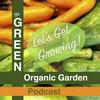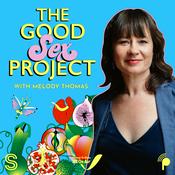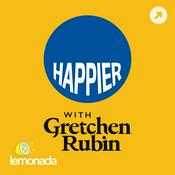304 episodes

Gardening Starts in the Fall
26/10/2025 | 12 mins.
Are you dreaming of harvesting your own juicy, homegrown tomatoes next summer? Tired of paying outrageous prices at the grocery store? Good news: fall is the best time to prepare your garden for success.If I’ve learned one thing about organic gardening, it’s this: healthy soil = healthy plants. And there’s no better season than autumn to build a strong foundation for next year’s harvest.Start Composting in the FallFall leaves are gardening gold! Instead of sending them to the landfill, add them to your compost pile. Mix dry leaves with kitchen scraps—like eggshells, coffee grounds, and banana peels—and you’ll have rich compost by spring.Healthy compost improves soil structure, boosts nutrients, and helps your garden retain moisture during summer heat. If you don’t already have a compost bin, fall is the perfect time to start one.Build New Garden Beds Before SpringLooking to expand your garden? Fall is the ideal season to create new growing spaces. You’ll avoid the spring rush and be ready to plant as soon as the soil warms.Whether you’re dreaming of a kitchen garden, raspberry patch, pollinator border, or raised beds for leafy greens, gather your materials now. Supplies sell out quickly in spring—and often cost more.Tip: Raised beds need a lot of soil. Start sourcing or making it now so you’re not scrambling in April.Do a Fall Seed InventorySeeds are often sold out by spring, so use fall to get organized. Go through your stash, toss old or expired packets, and make a list of what you’ll need for next year.Ordering early ensures you get the varieties you want—and avoids that dreaded “out of stock” label when planting season arrives.How to Save Tomato Seeds One of the easiest fall gardening tasks is seed saving. Just one ripe tomato can provide enough seeds to grow a whole bed next year.Here’s how to do it:Scoop out seeds from a ripe tomato.Rinse and ferment them for a few days (to remove the gel coating).Dry thoroughly and store in a labeled envelope.Plant Cool-Weather Crops in FallWant an early spring harvest? Try sowing spinach or lettuce in fall. These hardy greens can overwinter and sprout as soon as the snow melts—giving you fresh greens weeks before summer crops take off.Most experts recommend planting by mid-August, but don’t be afraid to experiment. Weather patterns are shifting—this year we had 100° days in September with no frost by the end of the month! I’ll be sprinkling spinach seeds anyway to see what happens. Gardening rewards curiosity.You can also save seeds from lettuce—just let a few plants bolt and go to seed. You’ll collect plenty for next year while feeding birds and beneficial insects in the fall. Here’s a great blog post from Megan Cain at the Creative Vegetable Gardener I think you’ll love!Revisit Your Garden Goals Fall isn’t just about cleanup—it’s a season for dreaming and planning. Take time to reflect on your garden goals and put one into action before winter sets in. Compost, build beds, save seeds, or plant fall crops—whatever you choose, your future self will thank you.Question for you: What garden goal are you starting this fall? Share it in the comments!This podcast uses the following third-party services for analysis: Spotify Ad Analytics - https://www.spotify.com/us/legal/ad-analytics-privacy-policy/

Talking Tomatoes
26/10/2025 | 4 mins.
The shortest episode ever probably but a couple of good tips about tomatoes.This podcast uses the following third-party services for analysis: Spotify Ad Analytics - https://www.spotify.com/us/legal/ad-analytics-privacy-policy/

430. My 2025 Compost bin
07/9/2025 | 12 mins.
Nutmeg helps us lay out all the parts and piecesI got this Vivosun Compost bin off of Amazon for a bit of a cost of $150.00 but it's so worth it to see my mom have an easy place to throw her scraps and leaves and make that good rich soil for her new kitchen garden vegetable bed.I'm also going to include the link to my favorite pitchfork from AM Leonard.Please remember when you put food waste in the landfill it doesn't decompose the way it does in a compost pile. In a landfill, it is compacted in a closed environment and releases methane gas into the atmosphere, in a compost pile food waste decomposes in an aerobic environment decreasing the release of harmful green house gases. So even if you aren't a gardener it's important to keep your food waste out of the landfill. Can you recycle your neighbors scraps or find someone to donate your scraps to? In San Francisco make it mandetory residents and businesses collect the scraps for a municipal compost pile.I filled up two giant garbage bags of leaves after I filled my mom's beds with about 8 birdseed bags full of leaves and grass clippings that had been in her bin.The hugleculture method was the exactly what I needed to fill my mom's bed with soil.I actually dug all of this dirt out, rebuilt the sides, put the broken limbs in, smothered them with leaves, and then dug out my mom's dirt beneath the compost bin in order to fill this bed. But boy oh boy did it grow.Stain recommended by Nicole Burke from Gardenary.The Stain I bought from amazon.This podcast uses the following third-party services for analysis: Spotify Ad Analytics -...

429. Five Reasons You Should Build A Kitchen Garden
05/9/2025 | 12 mins.
People often ask me, “What is a kitchen garden?” What it is not is a garden in your kitchen. It’s not a tower full of lettuce growing in water next to your microwave or a pot of herbs on your windowsill. The answer is actually quite simple: a kitchen garden is essentially a bed of fruits, vegetables, and herbs you like to use for cooking, located near your kitchen. Convenience is one of the biggest keys to successful gardening. One ~ A kitchen garden is easier to care for if it’s located just outside your kitchen door, where you do your cooking. This might not always be possible, depending on your garden's position in the sun, but the closer you can get to accessing your main cooking area, the better. Two ~ A kitchen garden is easier to harvest from, making it more likely you will eat those vegetables you took so much time to grow. And they’ll thrive the more time you spend in your beds harvesting and caring for your little seedlings. Three ~ A kitchen garden that uses deep beds will also make your veggies grow stronger. This is because the roots can go deeper, water can circulate around them more fluently, and they can soak up all the nutrients they need. Additionally, the best soil possible is included. Four ~ A kitchen garden is easier to water. A kitchen usually has a water supply, so even if you don’t have a hose that will reach, filling a watering can from the sink will keep those baby seedlings moist when they are first germinating, one of the struggles of growing plants from seed.Five ~ A kitchen garden can contain a compost pipe, also known as a worm tube (just a piece of perforated 6” or bigger PVC pipe), making recycling your kitchen scraps easier than you’ve ever believed, while providing fresh nutrients to your garden all season long. To keep animals out, just cover with a plate or an upside-down clay pot bottom. Drop leftover food scraps, coffee grounds, egg shells, and even weeds down the tube. Worms will then turn these bits of waste into nutritious food for your soil and plants. You want your pipe to be about 21/2 feet long with the lower 18 inches buried into the soil. Last spring, my husband finally made my kitchen garden dreams come true, and this year I built one for my mom in her garden. We planted companion plants like basil and tomatoes, cucumbers and peppers, and sunflowers along the back of the bed near the garage to attract beneficial insects. We added nasturtiums, which not only add a peppery flavor and pretty color to summer salads but also serve as a natural deterrent to pests with their strong odor. An old trellis I found made an excellent climbing post for pole beans, something I can’t plant in our frosty Montana beds — and some lettuce, arugula, and radishes to pick first in the early spring. Despite my mom's repeated assurances that she could never get eggplants to grow, a couple of Black Beauties, did a great job producing a few delicious purple aubergines, one of her favorite vegetables to cook. Each corner grew a big squash, and I could only dream about my mom’s famous flower fritters that were a delicacy when we were kids. As we head into fall, it's a great time to design and build a kitchen garden for next spring and get started collecting those compost scraps, creating lots of healthy soil to fill those beds with.This podcast uses the following third-party services for analysis: Spotify Ad Analytics - https://www.spotify.com/us/legal/ad-analytics-privacy-policy/

428. 5 Lessons I Learned Building a Kitchen Garden For My Mom this Spring •
03/9/2025 | 15 mins.
The Hempstead Home Depot Garden Center Team Lesson #1: Measure First. My original plans for my mom’s bed was to build it 8’x4’ using four two-by-sixes cut in half and eight full-size. Before the associate at Home Depot made the first cut, I wondered how I'd fit an 8-foot board in my mom’s car. So, we ended up taking a couple of 2’x 6’x 12’ boards and cutting them into two 6-foot chunks and four 3-foot chunks each. But even this was too big in the end for the space I had picked out. A 5’x 2’ bed would have been best for her particular spot. If it were my house, I’d move the flowers and bushes to make room for the bigger bed, not the other way around. However, my mom hadn’t tasted the homegrown veggies we were going to grow yet. She was still not entirely sold on the value of a deep bed or growing your own, as she thought the farmers' market was convenient enough. [caption id="attachment_140350" align="aligncenter" width="768"] In this photo you can see how my brother drilled a couple of boards for extra support to sit on top of.[/caption] #2: Level ~ level ~ level I ended up pulling this bed apart and putting it back together, not one, not two, not three, but four times before I could plant it, because I didn’t take the time to level the bed properly in the first place. #3: Obtaining soil I can’t tell you how many people I have talked to about the first step to building a garden starts way before you are ready to plant, but with saving scraps and building a compost bin to create your own healthy soil. Deciding where to locate your soil and planning for extra soil when needed is essential. Someone had told me I could get soil at the local dump, but when I headed over with my garbage can, shovel, and some pots,...
More Health & Wellness podcasts
Trending Health & Wellness podcasts
About GREEN Organic Garden Podcast
Listen to GREEN Organic Garden Podcast, Huberman Lab and many other podcasts from around the world with the radio.net app

Get the free radio.net app
- Stations and podcasts to bookmark
- Stream via Wi-Fi or Bluetooth
- Supports Carplay & Android Auto
- Many other app features
Get the free radio.net app
- Stations and podcasts to bookmark
- Stream via Wi-Fi or Bluetooth
- Supports Carplay & Android Auto
- Many other app features


GREEN Organic Garden Podcast
download the app,
start listening.






































